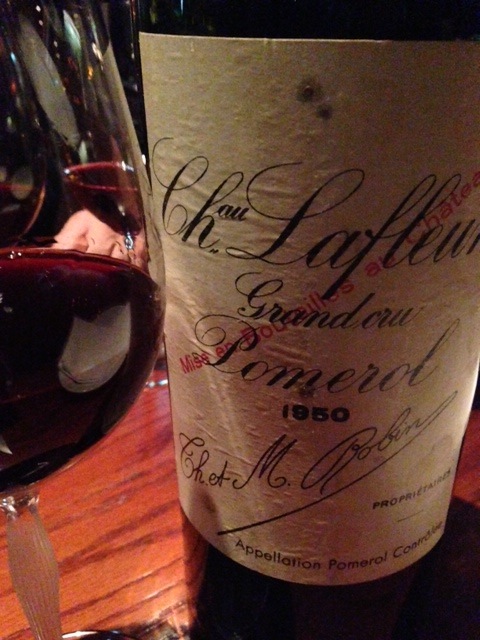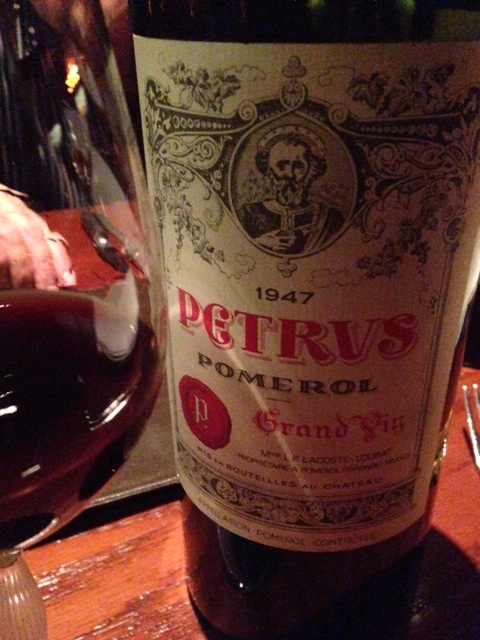A clearly fake 1950 Chateau Lafleurfrom an evening two weeks ago
Wednesday’s conviction of Rudy Kurniawan for fraud after selling hundreds of expensive counterfeit bottles and using others as collateral to secure a $3 million dollar loan underlines an ever-pressing problem for the wine industry. I can still remember an evening I spent with Kurniawan back in 2006. Over a magnum of what was obviously a bogus Latour-a-Pomerol, slightly drunk, he described how easy it was for someone to duplicate specific rare wines such as 1945 Chateau Mouton-Rothschild or 1961 Chateau Latour (click here for the full story).
I have been writing about questionable bottles for most of my career as a wine critic – first as an editor of Wine Spectator, and later as wine editor for Asia Tatler, the biggest luxury magazine group in Asia. My cover story on May 31, 1998, “A Taste of Deception: An Exclusive Look at Counterfeit Wine – A Multi-million Dollar Business”, still stands as a major reference point and very little seems to have changed except that the money involved is a lot more after 16 years.
I was also one of the first to question the authenticity of the so-called Thomas Jefferson bottles. I wrote in December 1985 just after the first public sale of a bottle of Jefferson Lafite-Rothschild in London that none of the experts on Jefferson believed the wines were authentic, especially the head historian of Monticello, the third president’s plantation in Virginia and a national heritage site today.
The second fake that evening,a supposed 1947 Petrus
I met the former owner of the Jefferson bottles, German Hardy Rodenstock, and he, of course, said the bottles were real. He said that same thing about imperials of the famous Bordeaux Chateau Petrus from 1921, 1924, 1926, 1928 and 1934 during a tasting I attended in the late 1980s. But I can still remember the wines’ dark ruby colors, aromas and flavors of cassis. I was convinced they were counterfeits.
Some experiences haven’t been so crystal clear. For example, I have tasted the legendary 1947 Chateau Lafite perhaps six times in my life and I am still not sure I have ever tasted a real bottle. On another occasion, during a tasting of Chateau Cheval Blanc from the 1940s and 1950s in Los Angeles about a decade ago, one collector joked that he preferred the fake bottle to the real one. It was funny at the time, but I think some people do prefer fake products to the real ones as they cost less and they can still be shown off. But that’s another article.
Counterfeiting wine is nothing new, and with today’s fine wine scene looking much the same as it did 40 years ago from at least one angle, I doubt even a (albeit harsh) sentence of a maximum 40 years in jail can change anything. Only two weeks ago in Hong Kong I had a magnum of 1950 Chateau Lafleur that was clearly counterfeit and another of 1947 Chateau Petrus that I thought tasted more like the 1971 than the legendary 1947. It will still ultimately be up to the consumer to be vigilant and wine merchants to be diligent.


